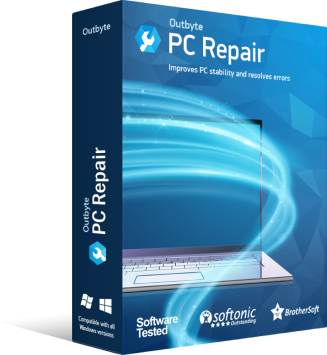Repair Utility
- File name: pc-repair-setup.exe
- Tool''s Developer: Outbyte
- Certified by: Symantec
- Download Size: 24 MB
- Downloaded: 1,143,473 times
-
Rating:

 Start Download
Start Download
Windows Operating Systems



Ultimate 802.11n Driver: Optimized Performance for Faster Wireless Connectivity & Reliable Network Stability
Wireless connectivity has become the backbone of modern digital life, and the 802.11n Wi-Fi standard remains a popular choice for balancing speed, range, and compatibility. However, even this reliable technology can suffer from performance hiccups, such as slow speeds, intermittent disconnections, or unstable connections. Often, the root of these issues lies in outdated, corrupted, or improperly configured drivers. Optimizing your 802.11n driver is key to unlocking faster wireless speeds and ensuring rock-solid network stability. This guide explores the common causes of 802.11n driver issues, provides step-by-step solutions, and highlights the long-term benefits of maintaining a well-tuned driver.
1. Causes of 802.11n Driver Performance IssuesUnderstanding why your 802.11n driver underperforms is the first step toward resolving connectivity problems. Here are the most common culprits:
- Outdated or Incompatible Drivers: Drivers act as translators between your hardware and operating system. Over time, updates to your OS or firmware can render existing drivers obsolete. An outdated 802.11n driver may fail to leverage the latest optimizations, leading to slower speeds or compatibility conflicts with newer software.
- Interference from Other Devices: The 2.4 GHz frequency band used by 802.11n is crowded with signals from microwaves, Bluetooth devices, and neighboring Wi-Fi networks. This congestion can cause packet loss, latency spikes, and reduced throughput, even if your driver is functioning correctly.
- Incorrect Router or Adapter Settings: Misconfigured router settings—such as an incorrect channel width (20 MHz vs. 40 MHz), outdated security protocols (WEP instead of WPA2/WPA3), or QoS (Quality of Service) prioritization—can bottleneck performance. Similarly, adapter settings like power-saving modes may throttle connectivity.
- Hardware Limitations: Older routers or network adapters may lack the processing power to handle high data throughput, especially in environments with multiple connected devices. Even a perfectly optimized driver can’t compensate for aging hardware.
- Software Conflicts: Antivirus programs, VPNs, or background applications can interfere with driver operations, consuming bandwidth or blocking essential processes.
Follow these actionable steps to resolve performance problems and maximize your wireless network’s potential:
- Update Your 802.11n Driver
- Visit your device manufacturer’s website (e.g., Intel, Broadcom, or Qualcomm) and locate the latest driver for your specific adapter model and OS version.
- Alternatively, use Windows Device Manager:
- Press Win + X, select Device Manager, and expand Network Adapters.
- Right-click your 802.11n adapter, select Update Driver, and choose Search automatically for updated driver software.
- Avoid third-party driver updaters, as they may install incorrect or malicious software.
- Optimize Router Configuration
- Access your router’s admin panel (typically via 192.168.1.1 or 192.168.0.1) and adjust these settings:
- Channel Selection: Use tools like Wi-Fi Analyzer to identify the least congested channel in your area.
- Channel Width: Enable 40 MHz mode for higher throughput if interference is minimal.
- Security Protocol: Switch to WPA2 or WPA3 encryption for better security and performance.
- QoS Settings: Prioritize bandwidth for critical tasks like video calls or gaming.
- Access your router’s admin panel (typically via 192.168.1.1 or 192.168.0.1) and adjust these settings:
- Minimize Signal Interference
- Reposition your router centrally, away from walls, metal objects, or appliances like microwaves.
- If possible, switch to the 5 GHz band using a dual-band router, though 802.11n’s 5 GHz support is limited.
- Reduce the number of active Bluetooth devices near your router or adapter.
- Adjust Advanced Driver Settings
- In Device Manager, right-click your adapter, select Properties, and navigate to the Advanced tab.
- Key settings to modify:
- Transmit Power: Set to Highest to strengthen signal range.
- MIMO Power Save Mode: Disable this to prevent performance throttling.
- 802.11n Mode: Ensure it’s enabled (set to Enabled or Auto).
- Disable Power-Saving Features
- In your adapter’s Power Management tab (under Properties), uncheck Allow the computer to turn off this device to save power.
- Adjust your OS power plan to High Performance to prevent network throttling.
- Replace Outdated Hardware
- If your router or adapter is over 5–7 years old, consider upgrading to a modern 802.11ac or Wi-Fi 6 device for better performance. Many newer models still support 802.11n for backward compatibility.
Optimizing your 802.11n driver isn’t just about troubleshooting—it’s about reclaiming the full potential of your wireless network. By updating drivers, fine-tuning router settings, and minimizing interference, you can achieve faster speeds, lower latency, and a stable connection that handles streaming, gaming, and browsing seamlessly. While 802.11n may not match the gigabit speeds of newer standards, its reliability and broad compatibility make it a viable option for many users. Regular maintenance, such as checking for driver updates and auditing connected devices, will ensure your network remains robust and responsive. In a world where connectivity is king, a well-optimized 802.11n driver keeps you firmly in control.
|
Enable Bluetooth on your Windows 10 device in seconds! Learn quick methods to activate Bluetooth via the Action Center, Settings app, or Device Manager. Troubleshoot common issues like missing toggles or driver updates for seamless wireless connectivity.
|
|
Learn how to enable Bluetooth on Windows 11 with this quick guide. Discover step-by-step instructions to turn on Bluetooth via Settings or the Quick Settings menu, pair devices, and troubleshoot common issues. Stay connected effortlessly!
|
|
Resolve common HP printer and scanner issues instantly using HP Print and Scan Doctor. This official tool diagnoses connectivity, printing, or scanning errors automatically, offering step-by-step fixes to restore functionality and optimize performance in minutes.
|
|
Experience crystal-clear visuals with Photo Viewer, a professional tool designed to showcase images in stunning detail. Enjoy seamless zoom, vibrant color accuracy, and support for multiple formats—all in an intuitive interface. Perfect for photographers, designers, or anyone seeking fast, reliable image viewing.
|
|
Experiencing No Audio Output Device Installed on Windows 10? This guide provides quick fixes to resolve the error. Learn how to update drivers, check hardware connections, reinstall audio devices via Device Manager, and troubleshoot Windows settings. Restore your sound in minutes with these step-by-step solutions.
|
|
Virtual Audio Cable lets you route audio between apps in real time, streamlining streaming and recording workflows. Designed for creators and professionals, it delivers studio-quality audio transfer with zero latency—no setup hassles or advanced skills needed.
|
|
Unleash curiosity with the Intel Play QX3 Microscope, a dynamic tool that transforms microscopic exploration into an immersive digital experience. Capture real-time images and videos, magnify specimens up to 200x, and interact with the hidden world through user-friendly software. Ideal for budding scientists, this device bridges learning and play, making complex science accessible and engaging.
|
|
Explore how cutting-edge audio technology transforms your drive into an immersive sonic experience. Discover the power of seamless sound engineering, precision acoustics, and innovative design that turns every journey into a symphony of clarity, depth, and emotion on the road.
|
|
The TEAC USB Floppy Drive bridges retro storage with modern computing, offering seamless access to legacy 3.5-inch floppy disks via USB connectivity. This plug-and-play external emulator ensures compatibility with contemporary PCs, enabling effortless file transfers, archival, or data recovery. Compact and portable, it’s ideal for users preserving vintage software, documents, or multimedia on today’s hardware.
|
|
Keep your computer running smoothly with our step-by-step guide to updating PC drivers. Learn how to locate, install, and verify the latest driver updates for enhanced hardware compatibility, security, and peak performance. Maximize system efficiency and troubleshoot common issues with simple, actionable tips.
|
| See all queries |



